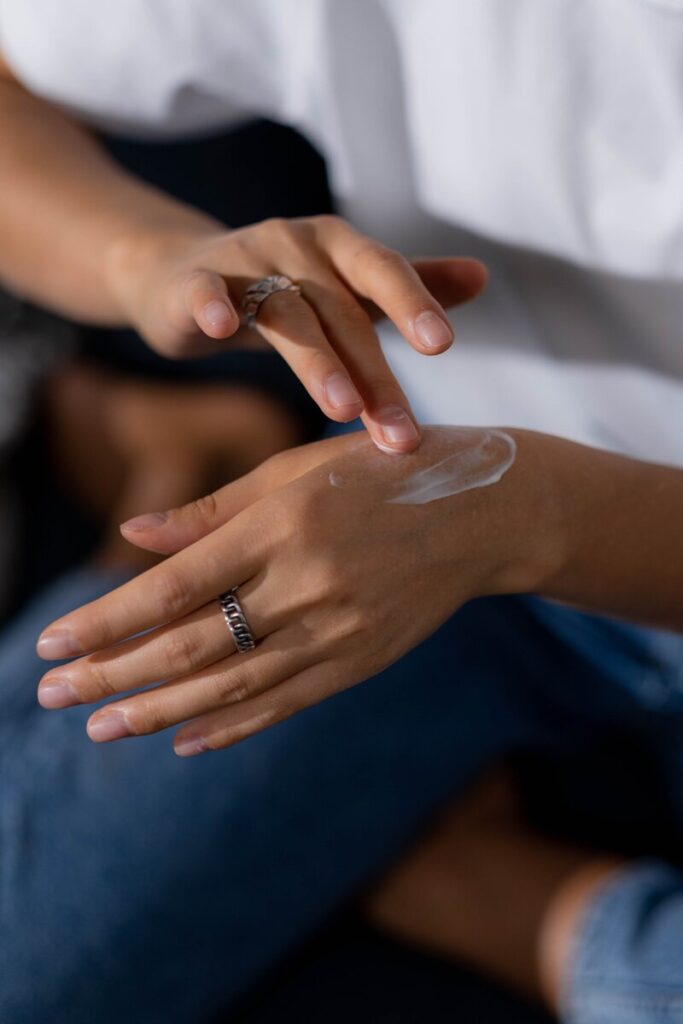Summer is a wonderful time to enjoy the outdoors but amidst the lush greenery, there’s an unwelcome guest that can turn your outdoor adventures into itchy nightmares – poison ivy. The common saying ‘leaves of three, let them be’ serves as a gentle reminder to recognize poison ivy and steer clear of it!
What is Poison ivy?
Poison ivy (Toxicodendron radicans) is a plant native to North America, known for its ability to induce allergic reactions. Its distinctive feature is its three-leaf arrangement and while these leaves are usually green, they can change color in different seasons.
Poison ivy causes what’s known as allergic contact dermatitis. This condition, characterized by uncomfortable and often itchy skin reactions, is a result of the plant’s toxic resin, urushiol. Urushiol is an oily resin present in various parts of the poison ivy plant, including its leaves, stems, and roots.
This is a type IV delayed type allergic reaction which means it won’t cause anaphylaxis but it will cause a rash to develop within 24-72 hours after contact. The rash is usually red and very itchy, oftentimes causing blisters in the skin. One of the tell-tale signs of poison ivy is that the rash will be linear and this tells us as dermatologists that you brushed up against something- that vine ran along your leg or arm. Most people react to the urushiol in poison ivy, but some lucky individuals don’t. Breathing in smoke with urushiol can also irritate your airways internally.
What to do if you think you’ve been exposed to Poison Ivy?
If you suspect you’ve been exposed to poison ivy, take the following steps to minimize the risk of a reaction:-
- Immediately wash your hands and any objects that may have touched the plant. Use warm water and soap, ensuring thorough cleaning.
- Wash your clothes to remove any urushiol residue and give your pets a bath as they can carry urushiol on their fur, which may transfer to you!
- Contrary to an old wives’ tale, washing with apple cider vinegar can actually worsen the rash. Stick to using mild soap and water.
What to do if you get a rash?
I know it is easier said than done but try not to itch! ITCHING can cause breaks in the skin which can lead to secondary skin infections. Apply cool compresses or ice packs wrapped in a thin cloth to the rash. This can help reduce inflammation and provide relief from itching. Soak in a bath with colloidal oatmeal, as it has properties that can alleviate itching and inflammation. Avoid hot showers, acids and irritating products that can burn the skin like alcohol and witch hazel. Take an antihistamine for itch like Benadryl, Zyrtec, or Allegra.
Typically the rash will resolve in 1-3 weeks. However, if the swelling worsens, affects sensitive areas (like the eyes or groin), or if you experience intractable itch, fever, or breathing difficulties, it is advisable to seek care from a dermatologist. They may prescribe a stronger steroid medication, such as prednisone, for a more extended treatment course.
Know that the rash from poison ivy is not contagious, it’s the urushiol oil that is.
Here are a few tips to keep you safe while spending time outdoors:
- Learn how to identify poison ivy and avoid touching, sitting, or camping in areas where poison ivy is present.
- Pets can transmit the plant’s oil on their fur to humans so be sure to also wash pets who may have been exposed, as well as any collars or leashes. While pets can transmit the oil, they are not typically susceptible to developing a rash.
- Wear long-sleeved shirts, pants, and socks to cover your skin as this will help in minimizing exposure to the plant’s oils. Take a shower and wash all items in warm water when you get home.
- An ‘ivy blocker’ can be applied to the skin if you know you will be working outdoors where there is underbrush or known poison ivy.
- If you identify poison ivy in your yard, consider using an herbicide specifically designed for its removal or carefully remove the plant, including the roots, while wearing heavy-duty gloves. Never burn poison ivy, as it can release urushiol into the air.
- If you have been exposed to these plants before, the rash will often develop in a few hours. First time exposure can take 2-3 weeks to develop.
Don’t let poison ivy ruin your summer – learn how to identify, treat and avoid it all year round!
A new podcast episode drops every Monday!










